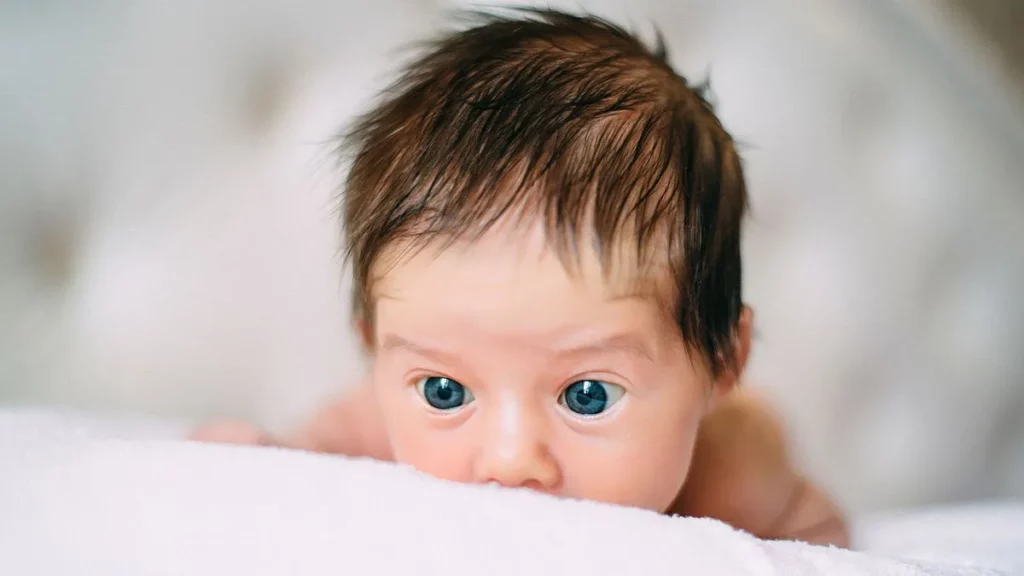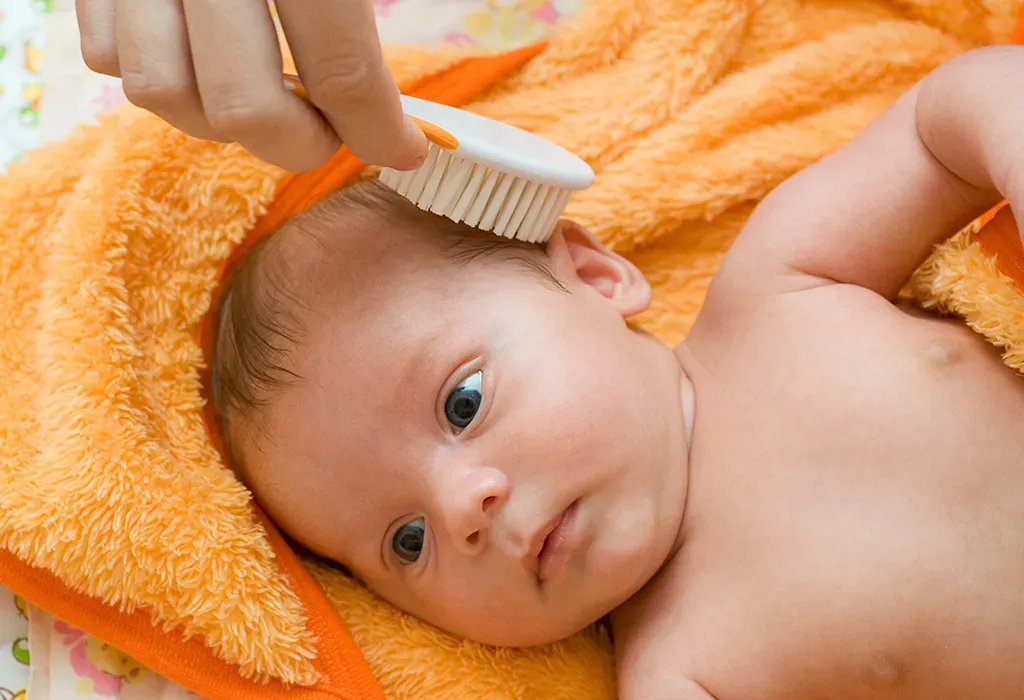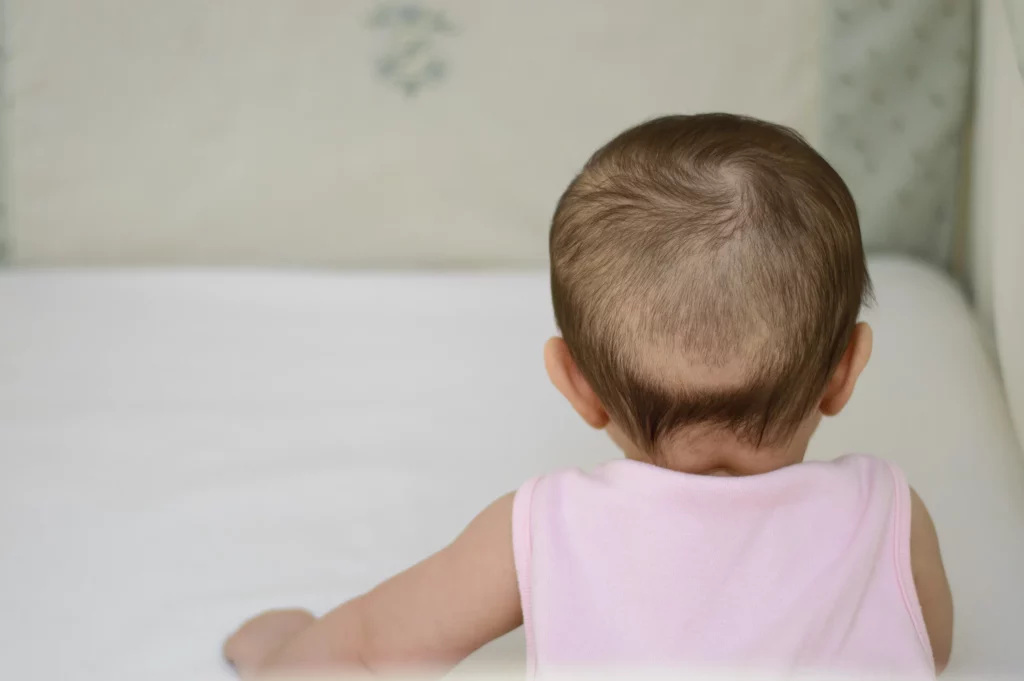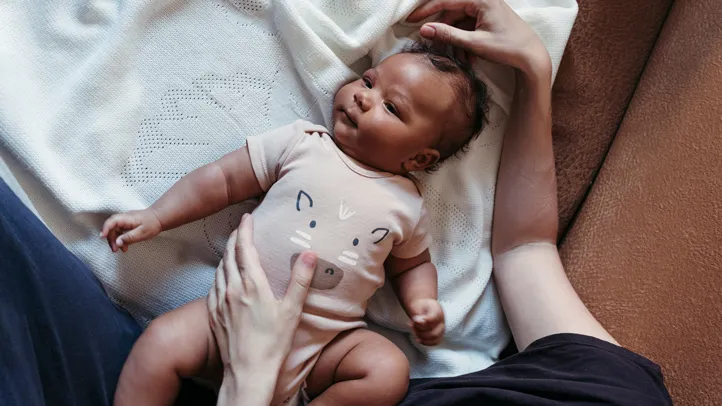Are you curious about when baby hair grows back after falling out? Keep reading to know the periods a baby’s hair grows back after falling out.

The sight of a newborn baby’s soft, fine hair is a precious one.
However, it’s not uncommon for babies to lose some or even all of their birth hair within the first few months of life.
Furthermore, parents often wonder when their baby’s hair will grow back after it falls out.
Newborn babies are born with a fine layer of hair known as “lanugo” that covers their body.
In addition to lanugo, some babies also have a tuft of hair on their heads at birth.
It’s important to understand that this initial hair is temporary and serves as a placeholder for the hair that will eventually grow.
Here, you will get to know the natural process of baby hair loss and regrowth.
When Does Baby Hair Grow Back After Falling Out?

Baby hair, also known as “lanugo,” is the fine, soft, and often colorless hair that covers a newborn’s body.
It’s entirely normal for babies to shed this hair shortly after birth, typically within the first few weeks to months of life.
Also, this natural shedding of lanugo and the subsequent growth of new hair is part of a baby’s normal development.
The timeline for when a baby’s hair grows back after shedding can vary from one child to another.
In general, it may take a few months for a baby’s new hair to start growing.
Furthermore, the new hair that grows after the shedding of lanugo is usually thicker and may have a different texture and color compared to the fine, soft lanugo.
However, it’s essential to keep in mind that the appearance of a baby’s hair can change over time.
Some babies may have very little hair at birth and gradually develop thicker hair as they grow, while others may be born with a full head of hair that changes in texture or color as they age.
If you have concerns about your baby’s hair growth or notice any unusual changes, it’s always a good idea to consult with a pediatrician.
They can provide guidance and ensure that your baby’s hair growth is within the normal range for their age and development.
The Natural Process of Baby Hair Growth

Here is the natural process of baby hair growth:
1. Lanugo Shedding
Lanugo, the fine hair covering a newborn’s body, usually begins to shed within the first few weeks of life.
Interestingly, this shedding is a natural part of a baby’s development and helps prepare the skin for the growth of permanent hair.
2. Birth Hair Loss
The tuft of hair on a baby’s head, often called “birth hair” or “baby hair,” can also start to fall out during the early months. However, this process can vary from one baby to another.
3. Temporary Baldness
As the lanugo and birth hair shed, some babies may appear to have little to no hair on their heads for a period of time.
However, this is entirely normal and part of the natural hair growth cycle.
Factors Affecting Hair Growth in Babies

Several factors can influence the timing and pattern of hair regrowth in babies:
1. Genetics
Genetics plays a significant role in determining a child’s hair growth pattern. Most times, babies inherit their hair characteristics from their parents.
2. Nutrition
A healthy diet with essential nutrients can promote hair growth. Furthermore, ensuring that a baby receives proper nutrition can support the development of new hair.
3. Hormones
Hormonal changes in a baby’s body can also affect hair growth most times. Hormones play a major role in the timing of hair regrowth.
4. Environmental Factors
The baby’s environment can impact hair health, and exposure to sunlight, temperature, and humidity levels can influence hair growth.
5. Patience and Care
Parents should exercise patience as they wait for their baby’s hair to regrow.
It’s essential to continue practicing good hair care habits for your baby, including gentle washing and moisturizing.
In conclusion, baby hair loss and regrowth are natural processes that vary from one child to another.
While some babies may quickly regrow their hair, others may take a bit longer.
Genetics, nutrition, hormones, and environmental factors all contribute to the timing and pattern of hair regrowth in infants.
If you have concerns about your baby’s hair growth or if you notice any unusual changes, consider discussing them with your pediatrician.
In most cases, baby hair loss and regrowth follow a natural and healthy course, and your little one will eventually have a head full of beautiful hair.
Related Searches: